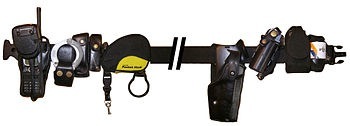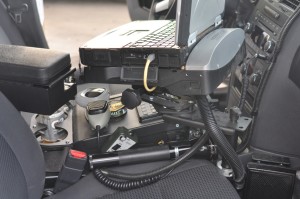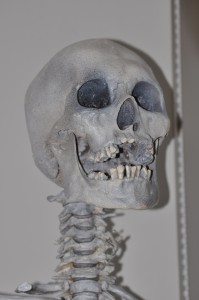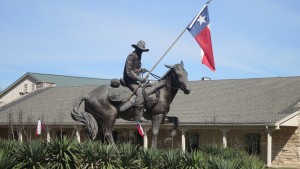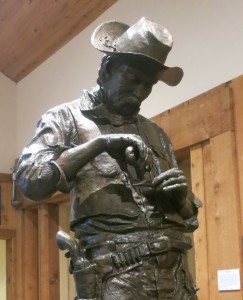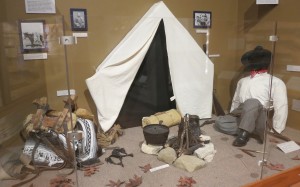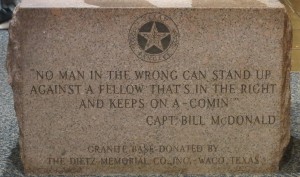Visiting Detective Lexi Sobado – “Every Day Carry (EDC) for Police”
Lexi Sobado and I crossed professional paths again while I was working a case that required a bit of psychic know-how. Lexi grew up in Washington D.C. and has special out-of-the-box thinking that earned her a job as a Puzzler for Iniquus. She solves the crimes that put American interests at risk. Known as Lynx on the job, Lexi works with a team, Strike Force, led by the man in Lexi’s life, Striker Rheas.
She had come up from D.C. on a case of her own and Sheila and I put her up for the night. We laughed, shared the usual war stories of law enforcement – the “my gal was badder than your guy” kind. And, then we talked shop for a bit.
My police department was stuck. We couldn’t find a suspect and the trail had run cold. We had solid evidence pointing to him, but he got away before we could arrest him. The case involved a missing husband worth big bucks, ransom money and a frantic family. Enter Lexi. In between munching on one of Sheila’s chocolate muffins, Lexi redirected my thinking on the husband. I’m happy to say that we found the hubby less than a day later. Turns out that the husband was running a scam and wasn’t missing at all. He was hiding out with his new girlfriend and the suspect we had been chasing was in on it. What a pair of bums! I doubt that the wife will be weeping for him while he does his stint in prison.
Lexi has been following Kerrian’s Notebook and she pointed out that I’ve never posted the basic gear that a cop carries around. My bad. So here is Lexi’s contribution to the site. Thanks, Lexi, for filling in a gap for us. 🙂
Duty Belt
Disadvantages
- Weight – upward of 30 lbs. (think one-year-old baby) many of the belts are made of leather, though modern uniforms often use nylon to be lighter and washable (think body fluids).
- Gravity – with all of that weight, the belt wants to slip down. “Belt keepers” circle the duty belt sometimes referred to as a Sam Browne, to hold it snugly to the officer’s dress belt. These are snapped into place.
Advantage –
- Having equipment at the handy.
Typical EDC (every day carry)
- Pepper Spray
- Semi-automatic pistol in a security holster
- Magazines (clips)
- Phone
- Flashlight
- Mini-flashlight (typical preparedness saying “One is none and Two is one.”)
- Asp
- Portable radio
- Taser
- Handcuffs
- Handcuff keys
- Zip ties
- Glove pouch (latex)
- Bullet resistant vest (required by some jurisdictions adds about 5 lbs to the already 10-15 lb duty belt)
- By individual discretion – back up gun (police personal gun often in an ankle holster)
- By individual discretion knife/utility tool such as a Swiss Army knife or Leatherman.
- By individual discretion a kubotan
The Patrol Vehicle
- Mode of transportation
- Mobile office
- Equipment storage
Modifications might include:
- Push bumpers
- Rifle mounts
- Prisoner partitions
- Specialized locking systems
- Wiring systems which support the add ons
- Hidden lighting systems
- Bar lights
- Weapons lockboxes
- Camera equipment
- Sirens
- Radio equipment
- Computer terminals (called MDT for Mobile Data Terminal)
- For officer safety, the light that usually comes on when opening the door is often disconnected.
In the Trunk of the Patrol Vehicle:
- Fire extinguishers
- First Aid Kit
- Shotgun
- Gas mask/protective suit
- AEDs or Automatic External Defibrillator (at around $1200 these are slow to getting in each vehicle)
- Traffic cones
- Flares
- Flotation devices
- Rechargeable flashlight
- Snow chains
Other Equipment might include:
- Radar
- Alco-Sensor (for initial analysis of blood alcohol levels)
- Tint meter
- Ballistic shield
- Pepperball gun – this shoots round pellets (like paintball pellets) filled with a powder form of pepper spray. Shot at the feet the powder will spray up to disperse a crowd; hit in the chest of an aggressor or suicidal person it gives the officers time to take non-lethal action.
Thanks, Lexi! Have a safe trip home. Don’t eat all the muffins at once. 😉
~~~~~~~
Many thanks to Fiona Quinn for visiting with us again at Kerrian’s Notebook and sharing the great list of every day equipment a law enforcement officer might use. She’s one of our favorite people, so please check out her website, connect with her on social media, and buy her books. 🙂 Fiona Quinn is the creator of the Lynx Series, featuring Lexi Sobado.
Fiona Quinn is the creator of the Lynx Series, featuring Lexi Sobado.
Fiona Quinn writes Smart Sexy Suspense.
The series is available on Amazon, along with the other books and short stories she has written.
Please visit https://www.fionaquinnbooks.com/ for more information about Fiona.
Her fascinating blog can be found at www.thrillwriting.blogspot.com
*Photo credits:
Patti Phillips – interior cruiser shots
Wikipedia and Fiona’s website – all others
Visiting Detective Lexi Sobado – “Every Day Carry (EDC) for Police” Read More »


